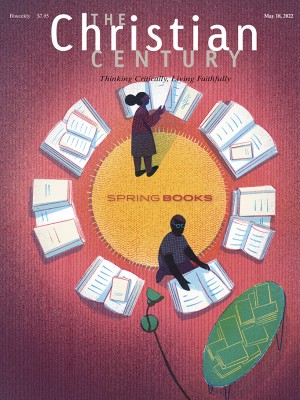The scientific meltdown over a controversial claim about ‘biblical Sodom’

What everyone agrees on is that something unusual happened at Tall el-Hammam, an ancient settlement near the Dead Sea.
In a layer of ancient earth, archaeologists claim to have found evidence of an apocalyptic event: Melted rooftops. Disintegrated pottery. Unusual patterns in the rock formations that can be associated with intense heat. For another three to six centuries after 1650 BC, the settlement’s 100 acres lay fallow.
But when Steven Collins, the principal archaeologist at Tall el-Hammam, considered the scientists’ evidence in a Nature article last year, he claimed that the incineration matched with the place and timing of the biblical account of Sodom and Gomorrah. And he brought down on himself what in academic circles might be called hellfire.
Read our latest issue or browse back issues.
In the biblical story of Sodom and its sister city Gomorrah (Gen. 18–19), Abraham bargains with God to spare Sodom—even then synonymous with sin—to save its few righteous residents. God is having none of it. “Then the Lord rained down burning sulfur
on Sodom and Gomorrah” (19:24). Abraham looks back and sees “dense smoke rising from the land, like smoke from a furnace” (19:28).
Led by Collins, executive dean of Trinity Southwest University, 21 experts from 19 research institutions weighed in on Tall el-Hammam’s remains, concluding that the nature of the destruction suggested a massive airburst or comet.
“The proposed airburst was larger than the 1908 explosion over Tunguska, Russia,” they wrote, “where a 50-m-wide bolide”—a meteor that explodes in midair—“detonated with 1000× more energy than the Hiroshima atomic bomb.”
These scholars also claimed that the “destruction matrix,” which they put at around 1650 BC, “is highly unusual and atypical of archaeological strata throughout the ancient Near East.”
What was unlike destruction caused by earthquakes or warfare were pottery shards with their outer surfaces melted into glass, some bubbled as if boiled, suggesting some unknown high-temperature event. Objects of daily life, carbonized pieces of wooden beams, charred grain, bones, and limestone cobbles were burned to a chalk-like consistency.
But in March, Steven Jaret, a postdoctoral fellow at the American Museum of Natural History, and R. Scott Harris, a space scientist at Atlanta’s Fernbank Science Center, challenged these conclusions of the 21 scholars, also in Nature, implying that Collins’s group confused run-of-the-mill smelting and pottery processes with heat from an airburst.
A burgeoning group of scientists agree with these two, making much of the fact that Collins’s school is “an unaccredited Bible college.”
“It certainly raises suspicions when an archaeologist makes dramatic claims like ‘this site is Biblical Sodom’ and that person is not credentialed as we expect,” said James Hoffmeier, emeritus professor of Old Testament and ancient Near Eastern history and archaeology at Trinity Evangelical Divinity School.
But Hoffmeier added, “As we well know, however, there are highly qualified archaeologists whose minimalist presuppositions draw outrageous negative conclusions about the Bible and their work is rarely subjected to critical evaluation.”
In response, Collins noted that most of the 21 authors of the original paper are scientist peers who worked “six years” to produce their findings. He argued that “even if the two critics’ claims are valid about the failure to meet the crystalized criteria for extraterrestrial matter, it doesn’t even touch the melted room, plaster, humans, etc.”
The intense criticism from the larger fraternity of scientists also includes assertions that some of the original papers’ authors have been too quick in the past to identify bolides. Science Integrity Digest pointed out that eight of the 21 authors are founders of the Comet Research Group, which has attempted “to show that ancient cities were frequently destroyed by comets, and to do something about comets before ‘your city is next.’”
But Hoffmeier insists that scientific debate can proceed without ridicule. “Walter Rast and Tom Schaub in the 1970s–’80s had advanced the idea that Bab ed-Dra and Numeira were associated with Sodom and Gomorrah,” he said. “Their idea was evaluated by the discipline and rejected. I think Collins and his team should be afforded [such] a courtesy.” —Religion News Service






